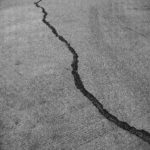
Gab Learns – The Elements
It’s our last episode for 2022, and wow we’ve learnt some things this year! We hope there have been some good lessons for you along the way as well.
For our final episode we talk about the elements, and while I was thinking Captain Planet, Peter is thinking the periodic table. So, in our lighthearted fashion we decided to talk about both and finish the year off slightly left field (wild, we know)!
Captain Planet
Let’s get started with Captain Planet, if you’re an 80’s child you’ll remember him well – he was our hero, taking pollution down to zero with his Planeteer friends – Fire, Water, Wind, Earth, Heart. You might be wondering how this animated environmentalist superhero has anything to do with building science? Well, he doesn’t. But if he did – we thought we’d break down how he is still our hero in 2022.
Earth – we covered seismic (shakiness of the earth) in our previous episode, so you can learn all about how to future proof buildings to withstand earthquakes and seismic events – it’s all about the foundations. In addition to that, with building design – check with the geotechnical engineer to discuss how much water is in the soil, where the water is, are there contaminants etc.
Fire – no one wants fire in their building (unless its controlled i.e. winter fire in a fireplace to warm the toes) and generally buildings are designed to try to use less flammable products on the walls, roofs, windows etc. What is usually done is the rainscreen cavity system (gap behind cladding) has a cavity break to prevent it acting like a chimney and to make sure if there is a fire that it doesn’t spread as quickly through that area. Fire engineers check where sprinklers are going, sizes of exit routes, how many stair routes there are etc. They don’t necessarily prevent fire from occurring (that’s the occupant’s job), it’s more that they safeguard to allow people to get out safely. Fire walls have time ratings (30mins, 1hr, 2hrs etc) which means they will stay in place for that timeframe before it crumbles, falls over and smoke or fire goes through so that people have that time to be alerted and get out.
Wind – wind is very relevant for a building. Build your building so things don’t break or fall off. An interesting point on wind is the wind pressure on the building. If you have a square building, and have one wall facing into the wind with a westerly wind pushing against the west elevation, pushing positive pressure against that building – that’s the windward side. The leeward side is the opposite side of the building (east elevation) to where the wind is coming from, and there is the least amount of pressure. Those are the easy ones. Now for the the north and south elevation, you’ll have negative pressure or suction on the wall. The most severe pressure is closest to the west elevation, because as the wind pushes against the building it moves around the building , forming little spirals that put suction on the building in those corners. The same thing goes for the roof – corners and edges near the windward side is where the most pressure is.
Water – the main thing people think about when they think of façade engineering is water. Keeping water out of the building, making sure it sheds, it doesn’t leak, etc. but the key part is making sure there is a continuous weather resistant layer/barrier of some sort, there is drainage, things can dry out. The part that is usually forgotten about (or just assumed that it is somehow handled by closed windows) in NZ is making sure the interior moisture can is ventilated outward (for when you’re cooking, showering, sleeping etc).
Heart – ahhh heart. The element that people tend to forget (both in Captain Planet and in building science). Designing for the occupant – this is what falls under heart. Building are for people, so we need to design buildings thinking about how the occupant is going to use the space. Are they going to be comfortable, are they going to be healthy, are they going to be able to pay for the heating they need to keep their building healthy, etc. You have to think of the hearts that are going into the building. And comfortability! With comfortability comes health, so if you’re comfortable in your home, then your building is comfortable.
The Periodic Table
Right, Captain Planet elements aside, let’s dive into the elements on the periodic table. There are currently 118 elements on the periodic table, but don’t worry we aren’t going to go through them all, just the ones Peter likes and some that apply to building science (maybe).
- Hydrogen (H) – it’s in water (H2O). Fun fact – people are thinking of different ways to use hydrogen instead of fossil fuel for vehicles and/or to replace natural gas in a home.
- Helium (He) – goes in balloons, makes your voice squeaky if you inhale it. Not much to do with a house
- Lithium (Li) – lives inside batteries. If you have a solar panel on your roof, you can use Lithium-ion batteries to collect it and keep power/lights etc running at night!
- Beryllium (Be) – nothing to do with buildings, but is fun to say.
- Boron (B) – some treated timbers are done with boron, and some are done with copper (Cu) too. Generally when you see pressure treated wood that has a green tinge to it, that’s the copper. The pink H1.2 one is mostly boron – this treatment on wood helps to prevent mould growth, borough and any buggy bug that eats things.
- Carbon (C) – its abundant and we are definitely trying to reduce the amount of carbon in the air, and many companies are trying to reduce their carbon emissions and plan for a greener future.
- Nitrogen (N) – the most abundant in the air – 70% nitrogen. It’s a component in fertilizers, so when you want nice flowers, guess what you need in your soil? Nitrogen.
- Oxygen (O) – you need this to live, oxygen is life. It is what you want to have in buildings, and CO2 (carbon dioxide) is what you want to get rid of. This is measured in parts per million which tells you how many molecules are in the air, the safe range is below 1000 ppm, and when it’s above 2000-3000 ppm that’s when you start to feel a little sluggish or headachy. There was a case study done on NZ schools that showed that almost all classrooms in NZ were operating at over 3,500 ppm at some points throughout the day! Oxygen is also what causes rust or oxidisation and what feeds a fire, but we need it to breath, so we just need to keep it in mind and prevent those things in other ways.
- Fluorine (F) – this often gets added to water, and helps makes sure you get less cavities. But it needs to be just the right amount.
- Neon (Ne) – pretttttty. Put Neon in a tube and charge the tube and viola you get a neon sign!
- Argon (Ar) – this is relevant for buildings! Argon gets added inside your window inside the IGU (insulating glazing unit) inside the double glazing which increases the thermal performance of the windows. When the H1 changes become mandatory the windows that will have to be used to get R0.37 will have to have argon in them.
- Chlorine (Cl)– treats water to make it clean and safe to drink. Like Fluorine, it also needs to be just the right amount so that it does its job and then disappears.
- Silicone (Si) – a component in sealants which we recommend to put on the outside of buildings because they are UV stable. Silicone is great because it lasts a lot longer than a polyurethanes or hybrids.
- Aluminium (Al) – used a lot in buildings, particularly in window frames. But it’s really good at transferring heat and energy, so make sure you put thermal breaks!
- Copper (Cu) – often used in pipes, wires and sometimes roofs!
- Zinc (Zn) – used to galvanize things ie. galvanized steel is when a layer of zinc is on the outside.
- Sulphur (S) – Rotorua. Need we say more?
So there we have it – some useful (and not so useful) information, but nonetheless a fun episode to end 2022 with! We hope you have learned with us this year, we will be back in 2023 to ask more questions, to be inquisitive and to learn – just like me. Gab Learns, peace out 2022.



